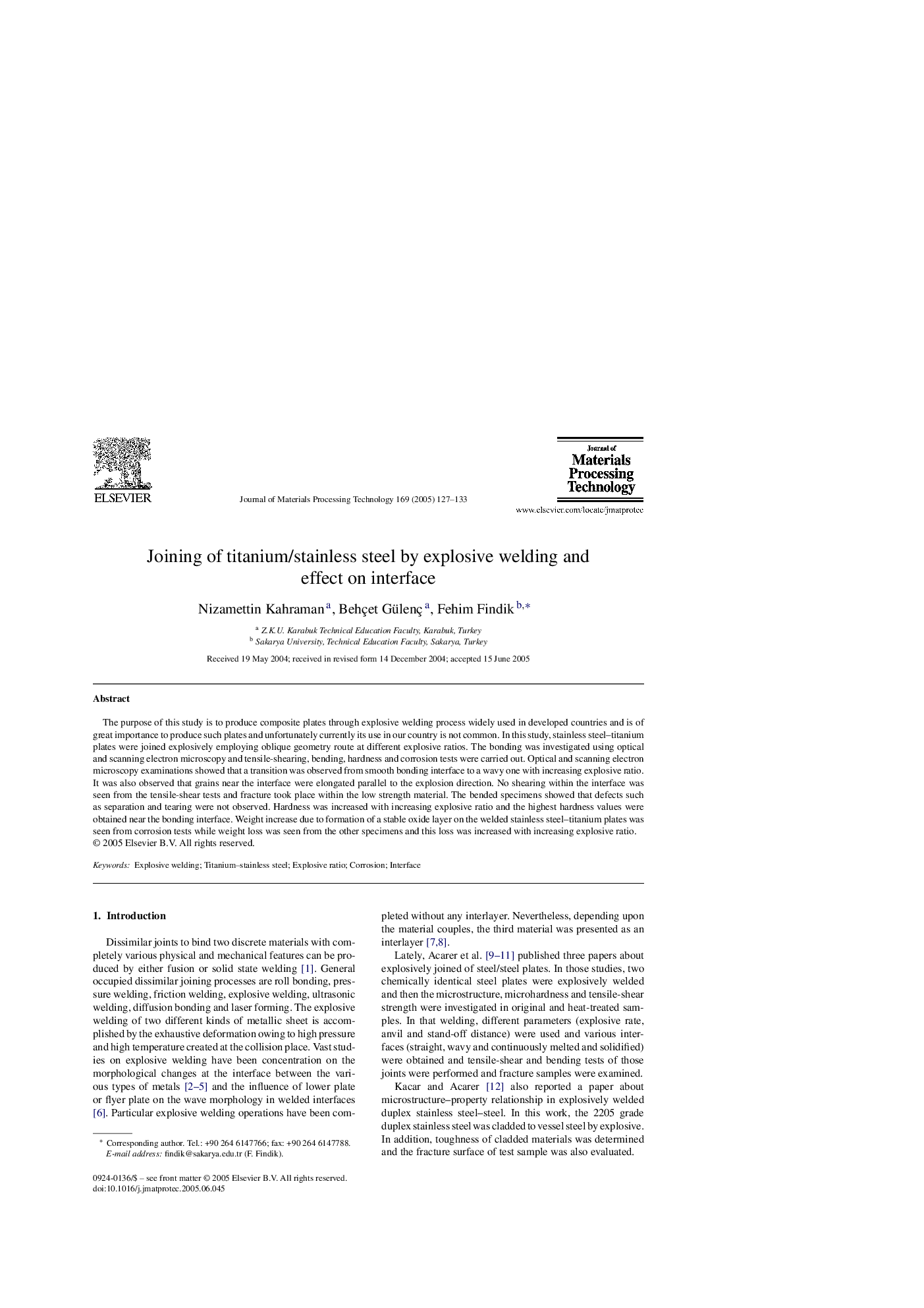| Article ID | Journal | Published Year | Pages | File Type |
|---|---|---|---|---|
| 10418353 | Journal of Materials Processing Technology | 2005 | 7 Pages |
Abstract
The purpose of this study is to produce composite plates through explosive welding process widely used in developed countries and is of great importance to produce such plates and unfortunately currently its use in our country is not common. In this study, stainless steel-titanium plates were joined explosively employing oblique geometry route at different explosive ratios. The bonding was investigated using optical and scanning electron microscopy and tensile-shearing, bending, hardness and corrosion tests were carried out. Optical and scanning electron microscopy examinations showed that a transition was observed from smooth bonding interface to a wavy one with increasing explosive ratio. It was also observed that grains near the interface were elongated parallel to the explosion direction. No shearing within the interface was seen from the tensile-shear tests and fracture took place within the low strength material. The bended specimens showed that defects such as separation and tearing were not observed. Hardness was increased with increasing explosive ratio and the highest hardness values were obtained near the bonding interface. Weight increase due to formation of a stable oxide layer on the welded stainless steel-titanium plates was seen from corrosion tests while weight loss was seen from the other specimens and this loss was increased with increasing explosive ratio.
Keywords
Related Topics
Physical Sciences and Engineering
Engineering
Industrial and Manufacturing Engineering
Authors
Nizamettin Kahraman, Behçet Gülenç, Fehim Findik,
